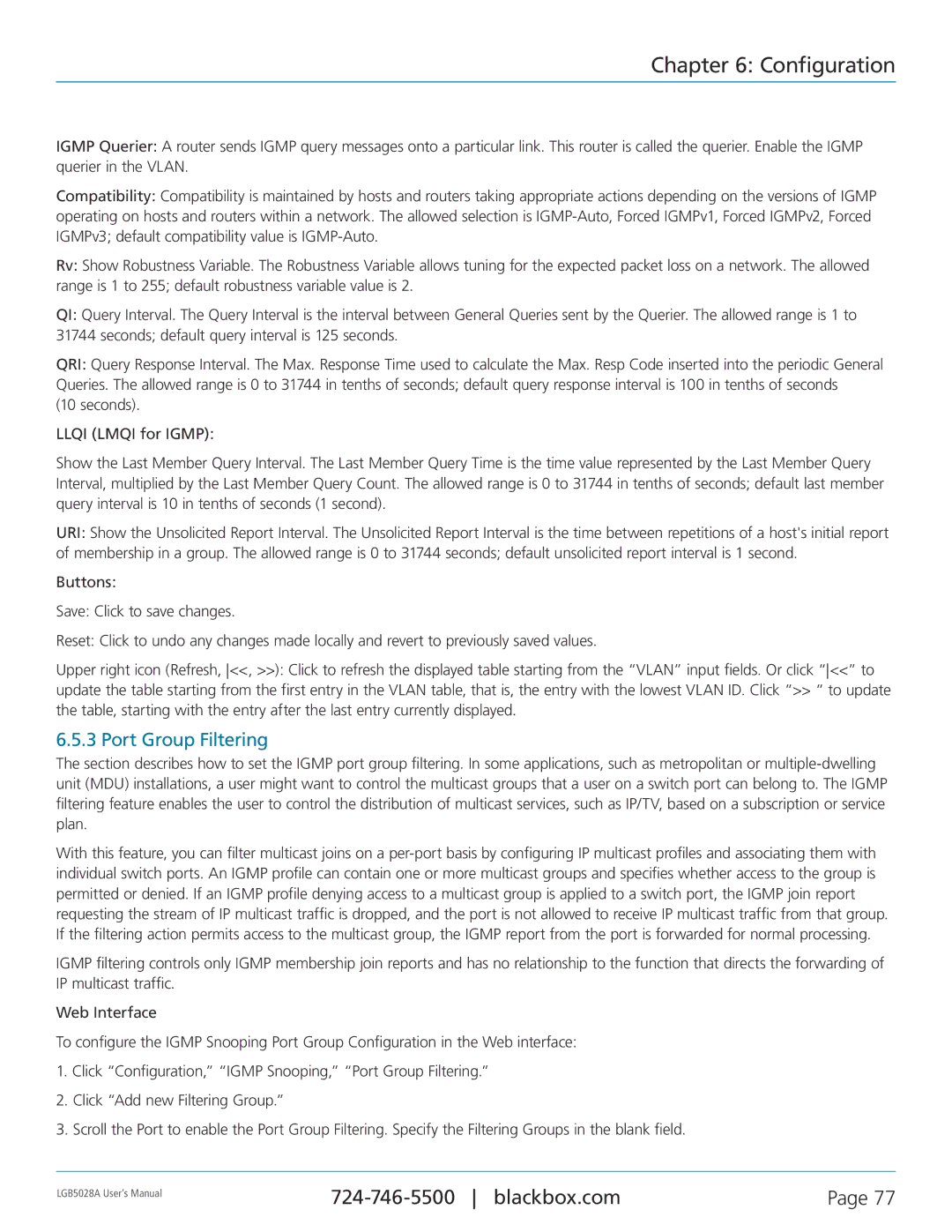
Chapter 6: Configuration
IGMP Querier: A router sends IGMP query messages onto a particular link. This router is called the querier. Enable the IGMP querier in the VLAN.
Compatibility: Compatibility is maintained by hosts and routers taking appropriate actions depending on the versions of IGMP operating on hosts and routers within a network. The allowed selection is
Rv: Show Robustness Variable. The Robustness Variable allows tuning for the expected packet loss on a network. The allowed range is 1 to 255; default robustness variable value is 2.
QI: Query Interval. The Query Interval is the interval between General Queries sent by the Querier. The allowed range is 1 to 31744 seconds; default query interval is 125 seconds.
QRI: Query Response Interval. The Max. Response Time used to calculate the Max. Resp Code inserted into the periodic General Queries. The allowed range is 0 to 31744 in tenths of seconds; default query response interval is 100 in tenths of seconds
(10 seconds).
LLQI (LMQI for IGMP):
Show the Last Member Query Interval. The Last Member Query Time is the time value represented by the Last Member Query Interval, multiplied by the Last Member Query Count. The allowed range is 0 to 31744 in tenths of seconds; default last member query interval is 10 in tenths of seconds (1 second).
URI: Show the Unsolicited Report Interval. The Unsolicited Report Interval is the time between repetitions of a host's initial report of membership in a group. The allowed range is 0 to 31744 seconds; default unsolicited report interval is 1 second.
Buttons:
Save: Click to save changes.
Reset: Click to undo any changes made locally and revert to previously saved values.
Upper right icon (Refresh, <<, >>): Click to refresh the displayed table starting from the “VLAN” input fields. Or click “<<” to update the table starting from the first entry in the VLAN table, that is, the entry with the lowest VLAN ID. Click “>> “ to update the table, starting with the entry after the last entry currently displayed.
6.5.3 Port Group Filtering
The section describes how to set the IGMP port group filtering. In some applications, such as metropolitan or
With this feature, you can filter multicast joins on a
IGMP filtering controls only IGMP membership join reports and has no relationship to the function that directs the forwarding of IP multicast traffic.
Web Interface
To configure the IGMP Snooping Port Group Configuration in the Web interface:
1.Click “Configuration,” “IGMP Snooping,” “Port Group Filtering.”
2.Click “Add new Filtering Group.”
3.Scroll the Port to enable the Port Group Filtering. Specify the Filtering Groups in the blank field.
LGB5028A User‘s Manual | Page 77 | |
|
|
